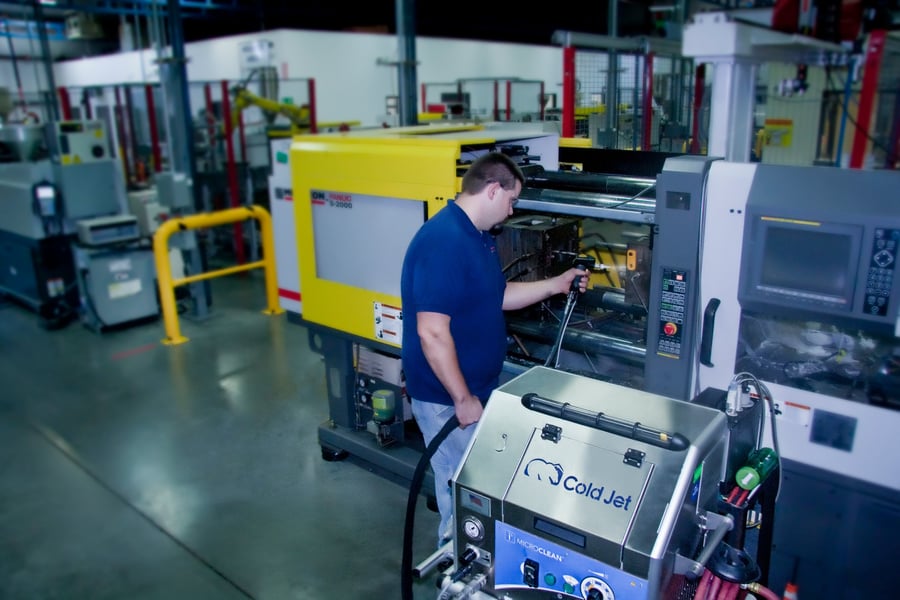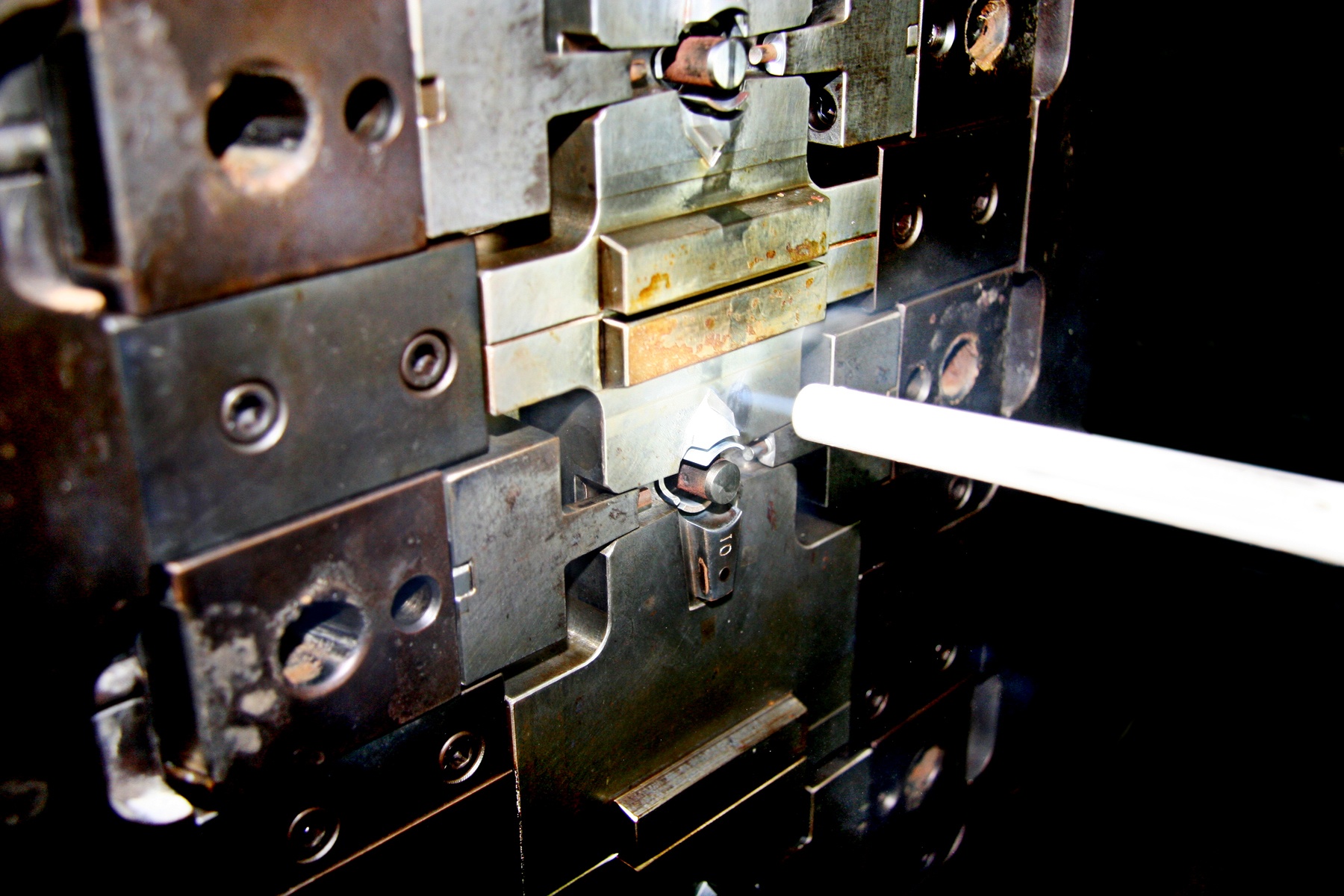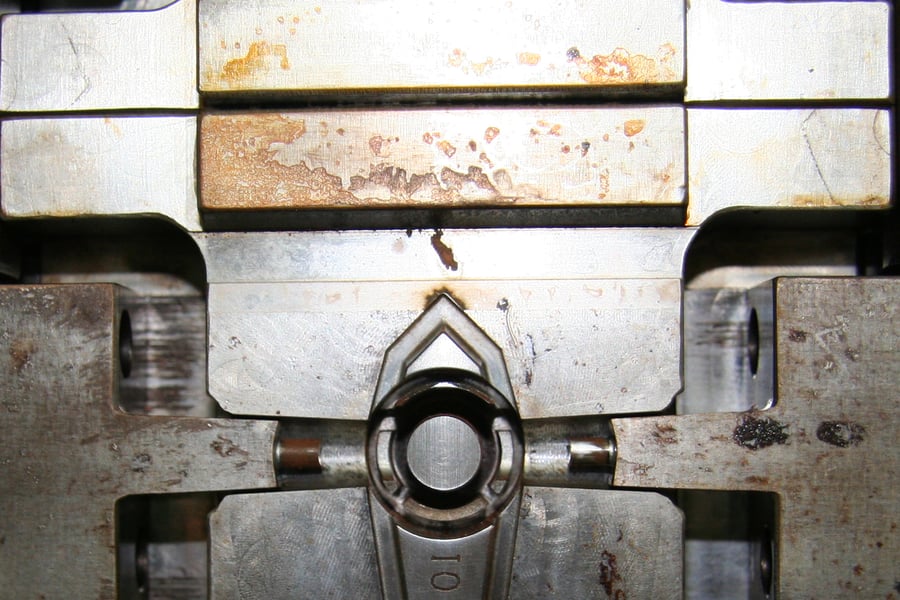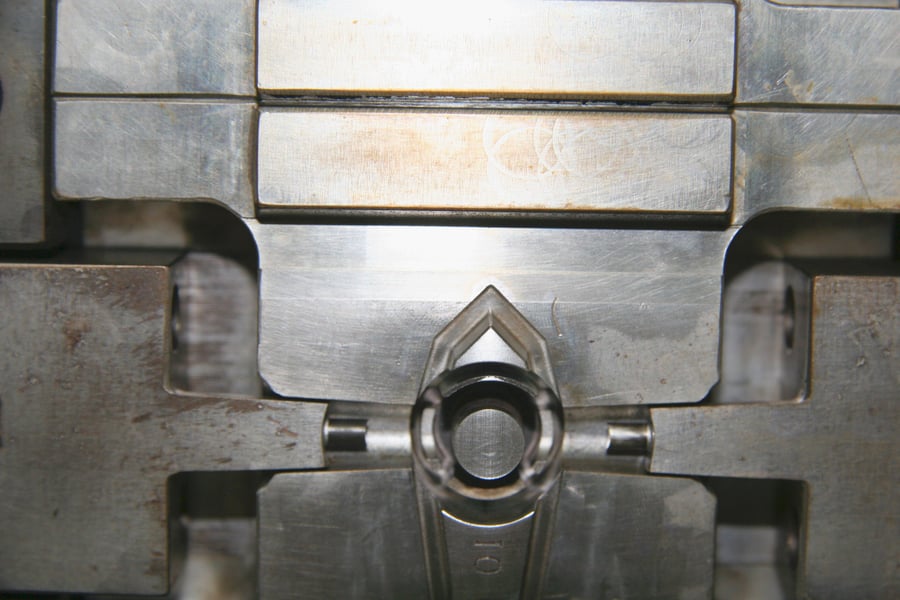
Performance Plastics specializes in high performance injection molding. The company produces small, complex, high quality parts.
For 30 years, they’ve focused on the application of these highly engineered plastics for the performance advantages that they provide when producing intricate part geometries with extremely tight tolerances. They excel at helping companies in the medical device, energy, aerospace/defense, industrial, electronics and food and beverage industries solve current product problems or to create competitive next generation advantages.
They do not mold commodity plastics or bid in auctions. They concentrate on the high-end materials that give customers the properties they need for very specific applications. In other words, the really tough stuff.
Finding the right cleaning process for their molds is vital.
Keeping the mold clean is a must in the mold making process. But there are two problems:
-
Resin and off-gassing sticking to the mold
-
Clogged vents
Tom Mendel, President and CEO of Performance Plastics, explains that good molders have a preventative maintenance program where they address gas buildup in the mold. Properly cleaning the mold is not only required, it is an acquired skill. No one wants to destroy the mold, because they can be a huge expense to replace – in Performance’s case, some molds can cost as much as $250,000.
Traditional cleaning methods, such as grit blasting, or using solvents and wire brushes, are abrasive and will often generate secondary waste streams that must be disposed of.
The traditional cleaning methods present several problems:
-
They are time consuming and result in extended production downtime
-
Molds require a complete teardown
-
-
The potential to damage the molds
-
Most traditional cleaning methods are abrasive and involve chemical solvents
-
Disassembling the mold raises the risk of damage
-
-
Environmental concerns
-
The use of chemical solvents is harmful to employees and the secondary waste created must also be disposed of properly
-

The Solution: Dry ice cleaning
Mendel will be the first to tell you that mold makers are usually pretty skeptical when it comes to trying new things; they have seen many fads and gimmicks come and go.
But because someone he trusted recommended trying dry ice cleaning to clean his equipment, he brought in a dry ice cleaning machine for testing.
Dry ice cleaning uses non-abrasive media in the form of recycled CO2 media that won’t damage surfaces or equipment. The combination of dry ice blast cleaning’s kinetic energy and thermal effects break the connection between the dirt and surface, lifting away contaminants.
Due to the unique characteristics of dry ice, the molds can be cleaned while still hot and in the press. This eliminates to take the mold offline, let it cool down and disassemble it for cleaning.
Benefits of dry ice cleaning include:
-
It is non-abrasive and will not damage the mold
-
No secondary waste (dry ice sublimates back to gas)
-
Environmentally responsible, safe and non-toxic
-
No downstream contamination
-
Reduces or eliminates employee exposure to dangerous chemical cleaning solutions
Learn how dry ice blasting works >>
The Results
1) Extending the running life of the mold
-
By cleaning the mold while it is hot and in the press, Performance Plastics extended production time of their molds.
“Cleaning with Cold Jet will not roll parting lines, change or destroy the metal,” said Mendel. “And best of all, it allows our running time to be extended. We use it every day, on every shift.”
2) Saving time and money by extending time between complete teardowns.
-
A complete teardown can vary with the part – sometimes it takes two days or 16 man hours to complete.
-
It also takes four hours to cool the mold down and four hours to reheat it.
-
The longer that a complete teardown can be delayed without damaging parts, the better.
“I would say that using the Cold Jet cleaning process extends the running time of our molds by 200-500%,” said Mendel. “It saves us from cooling the mold down, removing it, disassembling it, reassembling it, putting it back in and heating everything up. That is a lot of time and risk for damage.”
3) Dry ice cleaning provides a flexible and non-abrasive cleaning solution
-
They can apply just the right pressure to prevent damage, which is something they cannot always do when using solvents and wire brushes.
-
The shutoffs on certain high pressure materials have to be 0.0004”—because at 0.0005” it will flash, and at 0.0002-0.0003” it can’t be vented and will destroy the metal. These molds are very delicate; 0.0005 equals one-sixth of the diameter of a human hair. Solvents and wire brushes cannot achieve this close of a clean without the risk of damaging the mold.
“That’s pretty tight,” said Mendel. “And when you go in with a wire brush and accidentally take a little bit of the metal off, the mold can be destroyed.”
4) Achieving a higher quality clean, which reduces scrap rates and improves part quality
-
A cleaner mold equals a higher quality part. Dry ice allows the molds to be cleaned more frequently, and thus decreases scrap rates.
5) A faster and more effective option, which reduces labor needed for cleaning
-
Dry ice cleaning eliminates the need for time-consuming and strenuous manual cleaning, which often requires multiple workers cleaning for several hours.
-
Performance Plastics now needs only one person to clean the mold, versus two, so critical personnel can be directed elsewhere.
Before

After

.png) English
English